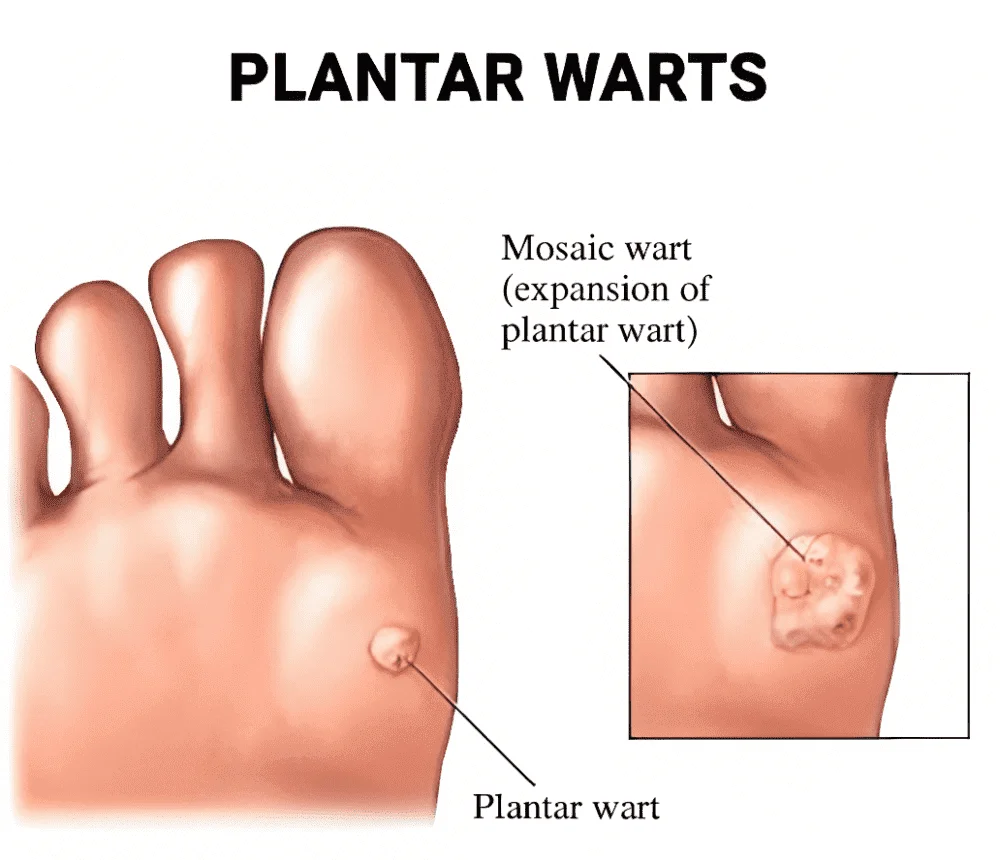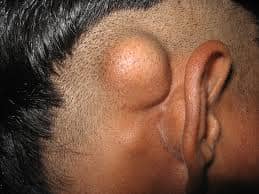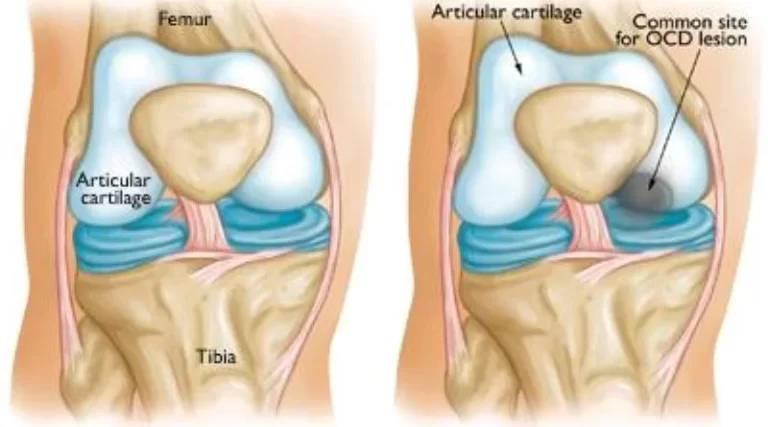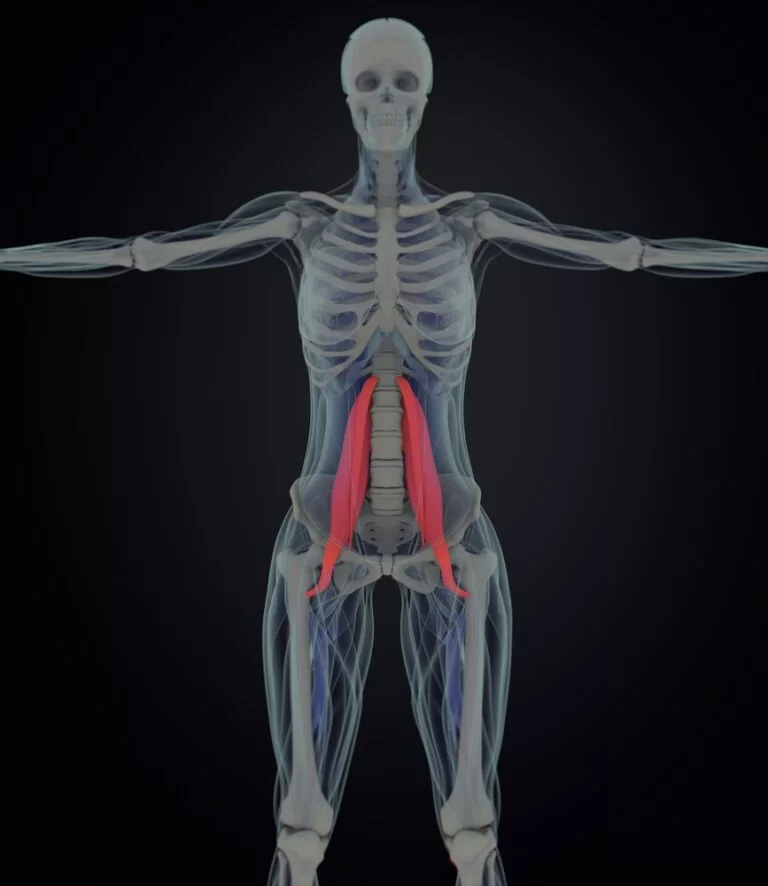Planter Warts
Plantar warts are a type of skin infection on your feet produced by the human papillomavirus (HPV). The infection causes rough bumps to form, which are uncomfortable or painful. Treatment options involve home remedies, medications, and therapies.
Table of Contents
What are Planter Warts?
Plantar warts (verruca plantaris) are mild (not harmful) rough bumps that form on the soles of your feet. They develop when the human papillomavirus (HPV) enters a cut or break in your skin and creates an infection.
Who can get Planter Warts?
Anyone can make plantar warts. However, you are more likely to make plantar warts if:
- You’re a child or teenager.
- You have an autoimmune disease.
- You have a weakened immune system.
- You’re 65 years of age or older.
- You’re white.
How common are Planter Warts?
Plantar warts are common. About 10% of people have plantar warts. Between 10% and 20% of children and youngsters have plantar warts.
How do Planter Warts affect my body?
Plantar warts could be painful. They could cause you to change how you stand, walk, or run to avoid pain. Over time, these changes to your natural posture or movement may create pain, discomfort, or stress in the muscles, tissues, or joints in your feet and ankles.
Plantar warts can also infect your mental health. You could feel self-conscious about your appearance and avoid going barefoot or wearing certain types of shoes or footwear, which may create stress, anxiety, or depression.
Are Planter Warts contagious?
Plantar warts are spreadable. They spread from direct contact with HPV, through either skin-to-skin contact or sharing objects such as shoes, socks, and towels. If you have a plantar wart, you can transmit yourself by touching the plantar wart with another part of your body.
HPV can also be transmitted through infected surfaces, especially if they’re warm or wet. It’s a good idea to wear shoes or flip-flops at the gym, public pool, sauna, steam room, or other public spots.
What are the symptoms of Planter Warts?
Plantar wart symptoms involve:
- Similar in aspect to other warts, but they are deeper in your skin, like an iceberg.
- Rough, thick surface that may look want cauliflower.
- (Dark pink, yellow, brown, purple, or grey) Discoloration.
- Dotted with brown or black dots (wart seeds). These are drained blood clots.
- Pain or tenderness.
- Discomfort.
- Bleeding.
Plantar warts typically form:
- On, around, or connecting your toes.
- On the balls of your feet (forefeet).
- On your heels.
Sometimes, many plantar warts do grow together in a large cluster called a mosaic wart.
What causes Planter Warts?
Plantar warts are produced by an infection with HPV in the outer layer of skin on the soles of the feet. The warts are promoted when the virus enters through tiny cuts, breaks, or weak spots on the bottom of the foot. Warts can persist for several years in adults and between a few months and two years in youngsters if untreated.
HPV is very common, and more than 100 types of the virus exist. But only a few of them do warts on their feet. Other types of HPV are more likely to cause warts on other places of your skin or on mucous membranes.
How are Planter Warts diagnosed?
If you experience some or all of the symptoms above, you could able to diagnose yourself with a simple test. It could be done using The Squeeze Test. This can assist in identifying whether you have a wart or a corn.
The Squeeze Test
- Simply squeeze the area from either side — if this raises pain, it is more likely a wart versus corn.
- To ensure you make an accurate diagnosis, we suggest seeing one of our podiatrists, as the treatment for a wart is very different from the treatment for a corn.
- Your podiatrist can normally tell if your skin growth is a wart just by looking at it, but if it is still not clear, a sample could be taken to be analyzed and confirmed.
Where are the risk factors of Planter Warts?
Anyone can progress plantar warts, but this type of wart is more likely to affect:
- Children and youngsters.
- People with weak immune systems.
- People who have kept plantar warts before.
- Cuts, wounds, or skin infections on your feet become a portal of entry for the virus.
- Having direct touch with someone with warts.
- People who walk barefoot in spaces where a wart-causing virus is common, such as locker rooms and swimming pools.
What are the complications of Planter Warts?
When plantar warts create pain, you could alter your normal posture or gait — perhaps without realizing it. Eventually, this change in how you stand, walk, or run can produce muscle or joint discomfort.
When should I see my healthcare provider?
Contact a healthcare supplier if your plantar wart:
- Bleeds or breaks open often, raising the risk of infection or spreading the virus.
- Itches.
- Looks infected (discolored, pus-filled, or tender).
- Makes standing or walking complicated or painful.
- Changes colors.
- Grows or spreads.
- Causes embarrassment.
How do you remove a Planter Warts?
Plantar warts frequently go away on their possess after one to two years, after your immune system fights off the virus. However, because plantar warts can spread, create pain, and make you feel self-conscious, your healthcare provider could recommend treatment.
Plantar wart treatment options involve:
- Cryotherapy: Your healthcare provider applies extreme cold to freeze and damage the plantar wart. To create a severe cold, your healthcare distributor will apply a substance like liquid nitrogen or argon gas.
- Immunotherapy: Immunotherapy assists your immune system in fighting HPV. This process includes a topical chemical, such as diphencyprone (DCP).DCP creates a mild allergic reaction that makes the plantar wart go away.
- Laser treatment: Your healthcare provider uses laser light to heat and damage the tiny blood vessels inside your plantar wart. The treatment cuts off the blood supply, which destroys the plantar wart.
- Electrocautery: Your healthcare provider applies an electric current to burn your planter warts off.
- Topical medicine: Your healthcare distributor applies a liquid medicine that contains the chemical cantharidin. A blister shape under the plantar wart that cuts off the blood supply. Your healthcare supplier will remove the dead plantar wart about a week later.
- Surgery: Your healthcare supplier will numb the area with a local anesthetic. Then, they’ll apply a sharp surgical knife (scalpel) to cut around the wart and a small scoop (curette) to scoop it out or tweezers to pull it out.
How can I decrease my risk of developing Planter Warts?
There are many ways to decrease your risk of developing plantar warts:
- Do not touch plantar warts on yourself or another person.
- Thoroughly clean your hands with warm water and antibacterial soap after touching a plantar wart.
- Thoroughly clean your feet, toes, and the spaces connecting your toes when you bathe.
- Dry your feet, toes, and the spaces connecting your toes after swimming or bathing.
- Don’t share towels, washcloths, shoes, socks, nail clippers or other personal object.
- Wear clean cotton or wool socks that absorb moisture or socks created out of synthetic materials that wick away moisture.
- Clean your shoes with antisepticize sprays or wipes.
- In public showers, saunas, steam rooms, and locker rooms, wear sandals or flip-flops.
- Throw away or thoroughly clean emery boards, pumice stones, or exfoliating tools that you use to push away dead skin on your plantar warts.
- Make the HPV vaccine.
How to recover from Planter Warts?
Most treatments for plantar warts take several weeks. The most important thing to remember when healing a wart is consistency.
Plantar warts could be difficult to eliminate and have a tendency to return, so be sure to follow your treatment proposal carefully.
Cryotherapy usually needs two to three trips to the doctor for liquid nitrogen therapy. Laser therapy capacity works in one to three treatments.
If you’ve kept your wart cut off by a doctor, stay off your foot for about a day. Keep the area covered with a bandage, and avoid putting pressure on the wart area.
How to treat Planter Warts?
In some cases, a plantar wart does resolve naturally. Other cases may need treatment. You can treat a plantar wart with a few different methods, either by seeing a doctor or by treating the wart at home.
Plantar wart treatment options involve:
- salicylic acid, which can assist in the “burning” of the wart and comes in forms such as a liquid, cream, stick, or embedded on cotton pads.
- cryo treatment, which could be used to “freeze” the wart.
- curettage, which includes cutting out the wart.
- medication relates directly to the wart.
- laser therapy to burn off the blood vessels that provide for the wart.
- Salicylic acid and liquid nitrogen are the most common treatments.
- Both need multiple treatments over several weeks to get rid of the warts or warts.
Salicylic acid is possible over the counter. You can apply it at home. Follow the directions on the packaging, and expect to try the medication for approximately 12 weeks.
One small review from 2019 developed that treating a plantar wart with salicylic acid was just as effective as cryo treatment by a doctor.
If your wart is deep or if it returns, you may be required to see a doctor. Your doctor could combine different treatments, such as cryotherapy with salicylic acid, for more effective results.
How to prevent Planter Warts?
To assist in preventing a plantar wart, consider the following tips:
- Always cover your feet in divided community spaces, such as pools, locker rooms, or dorms.
- If you are under 26 years old, ask your doctor about acquiring the HPV vaccine.
- It could help prevent warts, though more research is required.
- If you keep a wart, change your shoes and socks daily.
- Keep the wart covered, and wash your hands usually to avoid spreading plantar warts to other people.
FAQs
What is the main cause of plantar warts?
Plantar warts are created by an infection with HPV in the outer layer of skin on the soles of the feet. The warts grow when the virus enters through tiny cuts, breaks, or weak spots on the bottom of the foot. Warts can persist for several years in adults and between a few months and two years in youngsters if untreated.
What is the fastest method to get rid of a plantar wart?
The freezing creates a blister to form around your wart, and the dead tissue sloughs off within a week or so. Cryotherapy may also stimulate your immune system to beat viral warts. You could need to return to the clinic for repeat treatments every 2 to 3 weeks until the wart disappears.
Are Plantar’s warts serious?
Some people mistakenly consider plantar warts or palmar warts to be malignant. In reality, they are not harmful. Eventually, in about two years, most warts go over without treatment. Warts can, however, create irritation or minor pain, depending on their location.
Do plantar warts spread?
The virus grows in warm, moist environments, such as those made in a locker room or in your shoes when your feet sweat and moisture are trapped. Plantar warts frequently grow larger, spread to other areas of the foot, and have “babies,” forming a cluster that resembles a mosaic.
What vitamin deficiency causes plantar warts?
Patients with plantar warts had significantly lower serum vitamin B12 levels than patients without warts. Therefore, we advise that patients with warts should be assessed for serum vitamin B12 levels.
Do plantar warts go away naturally?
Plantar warts often go away on their possess after one to two years, after your immune system fights off the virus. However, because plantar warts can spread, create pain, and make you feel self-conscious, your healthcare provider could recommend treatment.
Are plantar warts fungal or viral?
Because plantar warts are a fungal inflammation, they don’t always go away with topical treatment. But for some reason, covering your plantar wart with duct tape daily has proven to be one of the most effective methods to treat plantar warts.
Should I ignore plantar warts?
In 65% of cases, warts do clear up on their own and without medical intervention. However, if you ignore a severe plantar wart or a mosaic wart, the subsequent could happen: Prolonged pain and discomfort, resulting in more serious treatment down the track.
What is the best medicine for wart removal?
Warts are frequently treated with a salicylic acid solution or cryotherapy. These are also the best-studied therapy.
Do plantar warts get bigger?
Warts on the plantar surface of the feet are known as plantar warts. Plantar warts frequently start off as a tiny, rounded patch of rough or thickened skin, but they can spread to affect larger areas.
Are plantar warts genetic?
A patient’s promotion of a plantar wart is brought on by a number of causes. Genetics comes first. A substantial proportion of people are genetically inclined to develop warts. similar to how certain people are more prone to the bacterial skin illness known as acne.
Are plantar warts caused by diabetes?
Plantar warts are a kind of diabetic foot infection that is created due to HPV or human papillomavirus. This viral infection affects the outer layer of the skin on the feet and creates pain and sensitivity with the action of pressure and friction.
Can plantar warts cause damage?
An unharmful skin development is a plantar wart. Plantar warts happen on the bottom of your feet and can be painful when you walk. A virus causes the top layer of skin to grow quickly, causing a wart. Warts usually go away on their have in months or years.
How can you avoid warts?
Don’t share towels, washcloths, clothing, nail clippers, razors, or other personal object. Don’t touch another person’s wart. make the HPV vaccine and use condoms to prevent genital warts. Keep your feet dry to avoid the spread of plantar warts.
When should I stop plantar warts?
what time to quit treatment. The American Osteopathic College of Dermatology (AOCD) advises clients to continue utilizing wart treatment until the wart is completely gone and resembles the surrounding skin. There shouldn’t be any black specks or places with a grainy texture visible to people.






